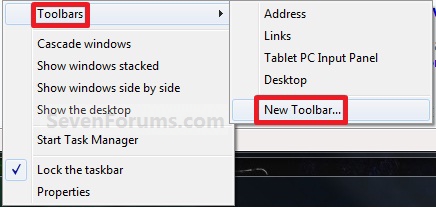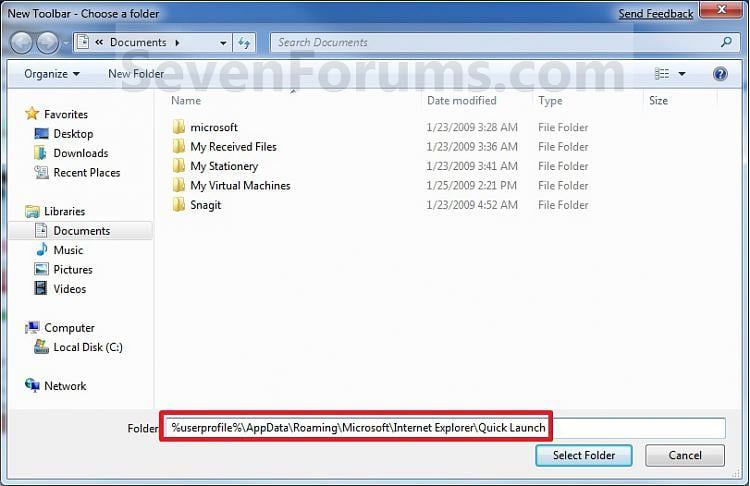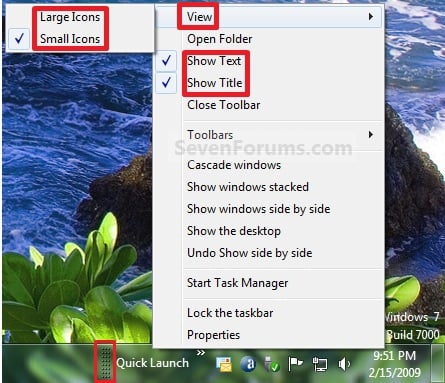THE RITUALS AND THE RATIONALE
The Hindu Wedding Ceremony has a number of rituals and customs most of which are often labelled as superstitious or time wasting. It is believed to be nothing but rituals more rituals. But have we asked ourselves what a " Ritual " is? A ritual begins as a creative rational action to express a sentiment or idea – like the lighting of lamp to dispel darkness at twilight or folding of hands into a "Namaste" to greet an elder. As more and more people succeeding generation repeat the action it becomes a convention – then a RITUAL. A ritual is thus an action on which time has set its seal of approval.
The Ritual of the Hindu Wedding too is each symbolic of beautiful and noble sentiments. Unfortunately today many parents and couples perform them without an awareness of the rich meaning behind them.
A modest attempt has therefore been made to briefly describe the meaning and significance of the rituals of a Tamil Brahmin Wedding. Mostly this are applicable to any other Hindu section. For the elders, this information may be superfluous but it is hoped the younger generation, especially those yet to be married, may find this useful.
So let us take you around . . . . .
As you enter you see . . .
Full-grown plantain trees tied to both the gateposts – Eternal tree of evergreen plenty for endless generations!
Festoons overhead of mango leaves, and screw-pine petals that never fade!
Notes of the Nadaswaram, the South Indian Shehnai!
Kolam or Rangoli designs at the doorsteps – an artistic welcome!
At threshold of the hall, sprinklings of rosewater, offerings of flower, sandal batter, sugar candy!
THE EVENING PREVIOUS TO THE MARRIAGE DAY
USHERING-IN OF THE BRIDEGROOM
On the evening prior to the wedding day, the bridegroom is to be brought in a procession from a temple in a flower decorated car. He is escorted by the bride’s parents, and welcome at the marriage mandap, which is the bride’s abode. Nadaswaram band leads the way along the streets, the flower decorated car jam-packed with children.
This is a social function, called
JANA VASAM in South India and
BARAAT in North India.
Through such a parade, public approval is sought of the groom, chosen by the family.
After reaching the marriage hall, there is a formal ceremony of betrothal.
ON THE WEDDING DAY
THE PRELIMINARY INVOCATION
‘GANAPATI PUJA’As in an inauguration of any function so also in a marriage – Ganapati, the God of Initiation is invoked, to keep away all impediments.
‘NANDI DEVATA PUJA’There are several presiding deities – the Nandi Devatas. To propitiate them, a leaf-laden branch of the pipal tree is installed, and an ablution with milk is performed by five Sumangalis (housewife, with husband living). This puja is followed by a presentation of a dhothi, and a saree to the marrying couple.
‘NAVAGRAHA PUJA’This is performed to propitiate the nine astral planets that rule over man’s destiny.
‘VRATHAM’The marriage ceremonies begin with the Vratham performed separately by the bride and the groom. For the bride, it means the tying of the
KAPPU – the holy thread on her wrist which is meant to ward off all evil spirits. It symbolises a kind of the protective armour for the bride. For the groom, the various Gods – Indra, Soma, Chandra, Agni. From there on, the groom prepares himself for a new chapter in his life as a householder or Grihasta. The days of his bachelorhood or brahmacharya are now over and the acceptance of this is all what the Vratham is about.
‘KASI YATRA’This a very important part of the ceremony. Immediately after his student-life, the young bachelor has two alternatives before him – Married life ( Grihasta ) or asceticism ( Sanyas ). Being by nature escapist, he prefers the ascetic life to the tribulations of married life. He therefore ‘makes his way’ to kasi (
VARANASI), complete with slippers, umbrella, bamboo fan etc. On his way, the bride’s father intervenes and advises him of the superiority of married life to ascetic life. He also promises to give him his daughter as companion to face the challenge of life. The umbrella is to remain with groom, to remind him in the future, of this advice.the real tradition.
(However there are different view points on this aspect. Given below is an observation by Sri. Narayan of Malaysia :
During the wedding ceremony the groom is welcomed as Mahavishnu Svarupaya varahaya ie maha vishnu himself (or the Siva the equivalent in the Adi Saiva tradition ) and the bride as Lakshmi. Thence , it is imperative he knows no sin, thence he needs to perform a yatra to kashi , submerge in Ganges and comes and does the wedding purified.
In the days of yore , when a man after education takes a yatra like this (it takes up some months, sometimes a year on foot) , he gets to see the world , otherwise which he would not have been exposed to , thence from Brahmacharya , before moving to grahasta ashrama he come experienced and purified, disiplined (goal oriented) and fit to take up the challenges of married life. And those days the groom would have been engaged (nischya dartha) , and proceeds on this yatra and is welcomed back after the father in-law etc after coming back, with this words Maha Vishnu Svarupaya, and given the kanya dhana.
Samnyasa and Grathasta ashrama are both pillars of the society , which is still relevant and have positive contributions to society.This has to be clearly understood.
Narayan, Malaysia)
‘VAAKU NICHAYA MUHOORTHAM’
At the marriage hall, the bride’s father and the bridegroom’s father facing each other, solemnise the final betrothal ceremony, the vedic priest chanting the relevant hymns-in which the names of the bride, the bridegroom, as well as the names of their three generations of ancestors, are cited in presence of friends, relatives, and invitees.
The manthras say : "O God Varuna, Be she harmless to my brothers and sisters! Oh Brihaspathi! May she no evil to her husband! O Lord Indra! Bless her to be a good guardian of her children! O Surya! Bless her with all wealths! "
EXCHANGE OF GARLANDS The bride and the groom are lifted to the shoulders of their respective uncles; and in that position the two garland each other thrice for a complete union. A garland worn by a person, should not be used by another, ordain our shastras. Here the exchange of garlands symbolises their unification – as one soul in two bodies. It is inward acceptance by each of the very fragrance of the other.
‘OONCHAL’
SWING, RIDE AND SINGING OF LAALIThen, the marrying couple is seated on a swing (OONCHAL); they rock forth and back, as the ladies around sing – LAALI, songs to praise to the couple. The chains of the swing signify the eternal Karmic link with Almighty above; the to-and-fro motion represent the undulating sea-waves of life; yet, in mind and body they shall move in harmony unperturbed, steady and stable.
‘PAALIKAI’ (SEEDS SOWING)
This is fertility rite. Paalikais are earthen pots prepared a day earlier – pots spread at the base with hariali grass and Bael leaves (Vilvam); nine kinds of pre-soaked cereals are ceremonially sown in these pots by Sumangalis. After the marriage, the sprouted seedlings are released in a river or pool. This ritual invokes the blessings of the eight-direction-quartered guardian angles, for a healthy life and progeny to the couple.
‘VARA PUJA’The feet of the bridegroom is washed in milk, and wiped off with silk.
Water, and lighted lamps are circulated around the swing in order to guard the couple against demons and ghosts.
Coloured globules of cooked rice are waved in circular motion, and thrown away – to propitiate the evil spirits.
‘KANYA DHAANAM’The bride is made to sit on her father’s lap and is given away as gift by him, to the bridegroom.
On the girl’s head, a ring made with Kusa, the sacred grass called
DARBHA, is placed, and over it, is placed a yoke; the Gold Mangal Sutra ( or
THAALI ) is placed right on the aperture of the yoke, and water is poured through the aperture. The Mantras chanted at this time, say:
"Let this gold multiply your wealth! Let this water purify your married life, and may your prosperity increase. Offer yourself to your husband! "
The bride then is given an auspicious ablution, and an exclusive new
KOORAI Saree is draped around her – this is done by the sister of the bridegroom.
To bride in her new saree, a belt made of reed-grass is tied around the waist. The manthras chant:
"She standeth here, pure before the holy fire, as one blessed with boons of a good mind, a healthy body, life-long companionship of her husband (Sumangali Bhagyam) and children with long life. She standeth as one who is avowed to stand by her husband virtuously. Be she tied with this red-grass rope, to the sacrament of marriage! "
Thanks giving vedic hymns follow to the celestial caretakers of her childhood: the Deities of
SOMA,
GANDHARVA and
AGNI. Having attained nobility, the girl is now free to be given over to the care of the human – her man.
The Vedic concepts underlying this ritual is figuratively this: that in her infant stage, SOMA had given her coolness of the moon, and strength; in the next stage, GANDHARVA had given her bodily beauty; and lastly AGNI gave her passions.
The father of the bride, while offering his daughter chants: "I offer ye my daughter, a maiden virtuous, good-natured, very wise, decked with ornaments to the best of my ability-; that she shall guard the Dharma, Wealth, and Love! "
THE BRIDEGROOM’S ASSURANCEThus offering her daughter, her father gets a word of assurance three times that the bridegroom shall remain for ever her companion in joy and sorrow – in this life, and after death too!
‘KANKANA DHARANAM’The bride ties a string fastened to a piece of turmeric, around the wrist of the bridegroom – to bind themselves by a religious vow. It is only after tying the Kankanam that the bridegroom gets the right to touch the bride. A little later, the bridegroom ties a Kankanam on the bride’s wrist.
‘MAANGALYA DHARANAM’Next, timed to exact auspicious hour, is the tying of the Mangala Sutra (Thaali). The bride seated over a sheaf of grain-laden hay, looking eastward, and the bridegroom facing westward, ties the gold Mangala Sutra around the neck of the bride. As he does so, the Nadaswaram drums are beaten loud and fast, so as to muffle any inauspicious sounds at the critical hour. This is called Getti Melam; as it sounds, the Sumangali ladies sing "
GOURI KALYANAME, VAIBHOGAMAY! "
Three knots are tied – the first one by the bridegroom, the other two knots by his sister to make the bride a parts of the boy’s family. The Vedic hymn recited by the bridegroom when he ties the knot, is: " Praying the Almighty that I be blessed with a long life, I tie this knot around your neck, oh soubhaygavati, may providence bestow on you a fulfilling life of a ‘Sumangalis’ for a hundred years to come! "
‘PAANI GRAHANAM’This means "holding hands". The groom holds the hand of the bride. The Manthras say: The Devas have offered you to me in order that I may live the life of a householder (
GRIHASTA); we shall not part from each other even after we grow old! "
‘SAPTHA PADHI’Holding the bride’s hand, the bridegroom walks seven steps with her. This is the most important part of the marriage ceremony, and only when they walk seven steps together ( i.e. perform SAPTHA PADHI ) is the marriage complete legally. The belief is that when one walks 7 steps with another, one becomes the another’s friend. The manthras recited then, mean: "Ye who have walked seven steps with me, become my companion, where by I acquire your friendship. We shall remain together inseparable. Let us make a vow together; we shall share love, share the same food, and share the strength, the same tastes. We shall be of one mind, we shall observe the vow together. I shall be the SAMA, you the RIG: I shall be the Upper World, you the earth; I shall be the SUKHILAM, you the HOLDER – together we shall live, beget children, and other riches, come thou, O sweet-worded girl! "
‘PRADHAANA HOMAM’A crucial part of the wedding is the homage paid by the couple to AGNI, the fire- God. They circle around the fire, and feed it with ghee, and twigs of nine types of trees, as sacrificial fuel. The fumes that arise, are supposed to possess medicinal, curative and cleansing effects on the bodies of the couple.
AGNI, the mightiest power in the cosmos, the sacred purifier, the all-round benefactor, is deemed as a witness to the marriage (
AGNI SAAKSHI)
TREADING ON THE GRINDSTONE Holding the bride’s left foot toe, the bridegroom helps her tread on a grindstone kept on the right side of the fire. The Manthras says: "Mount up this stone. Let thy mind be roc-firm, unperturbed, by the trials and tribulations of life! "
SHOWING HER THE "ARUNDHATI " STARNext he shows her the Star ARUNDHATI ( of the SAPTHA RISHI Constellation ), as also DHRUVA the polestar. Arundhati, the wife of VASISHTA Mahrishi, is exemplified as an ideal wife, the embodiment of chastity. DHRUVA is the one who attained immortality through single-minded devotion and perseverance – virtues to be emulated through out married life.
‘LAAJA HOMAM’This shall comprise the bride’s own offering to the sacrificial fire. As she is forbidden to do it herself, her brother helps her. He gives her a handful of parched rice grains which she hands to bridegroom who on her behalf, feeds it into the fire. Through this food offering, the bride seeks a long life for her husband, and propagation of the family. Participation of the bride’s family members indicates the continuance of links between the two families, even after marriage. The couple circle around the fire, three times, and the feeding of the fire with parched rice, is repeated thrice.
SHOWERING OF ‘AKSHADAI’Akshadai, i.e. rice-grains coated with turmeric and saffron, are showered on the couple, by elders and invitees – as benediction.
‘GRIHA PRAVESAM’Taking with her, fire from the Laaja Homam, the bride takes leave of her home, and enters the new home of her in-laws. The vedic hymns now sound likes the mother’s words of advice to her daughter: "Be the queen of your husband’s home. May your husband glorify your virtues; conduct yourself in such a way that you win your mother-in-law’s love, and be in the good books of your sister’s-in-law."
‘NALUNGU’The evening of the marriage day is the time to relax and play. The newly wed wife calls her husband for play, inviting him through a song. Much to the merriment of one and all gathered, there follows list of playful items: the bride anointing the groom’s feet with colour paste ; fanning him, showing him a mirror; breaking papads over each other’s head; wrenching the betel pack from each other’s hand; rolling the coconut from one to another as in ball-play; and so on. During these items, the ladies sing songs poking fun at the bride, groom and the in-laws.
These events brings out many qualities of the bride and the groom – sporting spirit, kindness, strength, co-operative nature etc.
THE NIGHT TIME HOMAMS
THE JAYAATHI HOMAM – is performed to propitiate the Gandharvas and deities.
PRAVESA HOMAM – is done to solemnise the bride’s entry in to the husband’s home. The sacrificial fire is brought along by the bride.
SESHA HOMAM – is Fire oblation with the residual ghee, a little of which is sprinkled on the bride’s head four times.
THAAMBOOLA CHARVANAM & BALA DHAANAM
The girl’s brother gives the ceremonial first betel to the couple to chew. Certain other gifts are made to bless the couple with children and long life.
MANGALA ARATHI
A solution of lime and turmeric powder, and in colour, is prepared on a plate, and circled around, and thrown away to ward off evil eye. This is done a number of times during the entire wedding ceremony, and at the end.
SHANTI MUHOORTHAM
The consummation of the marriage at night – the nuptials!












 kind of image in the right bottom corner of the screen.
kind of image in the right bottom corner of the screen.















